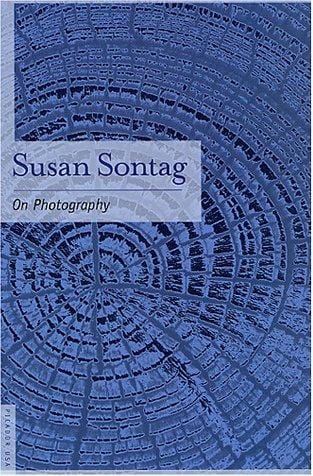Art & Faith: How Creativity Deepens Spiritual Experience
Art and faith share a timeless dialogue where creativity becomes a pathway to the divine, enriching personal spirituality and communal worship.

Introduction
Throughout history, art and faith have been intertwined like the warp and weft of a sacred tapestry. From prehistoric cave paintings that honored mysterious forces to stained-glass windows that bathed medieval cathedrals in jewel-toned light, creative expression has always served as a bridge between the human heart and the divine. In a world that often separates spirituality from daily life, rediscovering the dialogue between art and faith can reignite wonder, nurture reflection, and invite a more embodied form of worship.
Historical Roots of the Sacred Arts
The earliest religious communities used visual storytelling to pass on beliefs before written language existed. Egyptian tomb murals, Hindu temple carvings, and Mesoamerican codices did more than decorate; they formed a visual scripture. In Christianity, Byzantine icons and Renaissance altarpieces became "windows to heaven," teaching theology to largely illiterate congregations. Meanwhile, Islamic calligraphers transformed Qur’anic verses into flowing ornaments because figural images were discouraged. Across cultures, artisans devoted their finest skills to sacred themes, illustrating how faith pushes creativity toward excellence.
Symbolism: Layers of Meaning
One reason sacred art endures is its rich symbolic vocabulary. A simple circle may speak of eternity, while a lotus blossom evokes enlightenment. Colors, too, carry messages: gold represents divine light, blue suggests heavenly peace, and red calls to mind sacrifice or love. Symbols invite contemplative viewing; as the eye lingers, the soul explores deeper truths. Engaging with symbolic art can become a form of lectio divina for the senses, allowing viewers to meditate on layers of meaning that words alone might never unlock.
Personal Expression and Testimony
Beyond public monuments, art also offers believers a private language to wrestle with doubt, joy, or longing. The diaries of Vincent van Gogh reveal how painting allowed him to pray with color when words failed. Contemporary poets such as Mary Oliver use nature-laden verse as hymns of gratitude. Even amateur sketchbooks or dance improvisations can serve as spiritual journals, turning raw emotion into embodied prayer. In this way, art becomes testimony, a tangible record of a soul’s pilgrimage.
Enriching Communal Worship
Communities of faith have long recognized the power of aesthetics to shape shared experience. Chant and hymnody lift voices into harmony, fostering unity even when doctrines differ. Architecture directs attention upward: Gothic spires point toward heaven, while Zen gardens invite stillness. Ritual objects—the menorah’s seven branches, the mandala’s concentric rings—give cosmic order a physical form people can touch. By appealing to multiple senses, communal arts engage worshippers who learn best visually, aurally, or kinesthetically, making sacred gatherings more inclusive.
Contemporary Movements Reviving Sacred Creativity
The modern world, with its digital distractions, might seem hostile to reflection, yet a renaissance of sacred creativity is underway. Urban churches are commissioning street murals that reclaim neglected neighborhoods with messages of hope. Muslim designers fuse traditional arabesque geometry with augmented reality to animate verses in smartphones. Interfaith art festivals curate performances that honor diverse traditions while seeking common ground. These movements demonstrate that art remains a dynamic conversation partner for faith, capable of addressing social justice, climate care, and mental health through a sacred lens.
Integrating Art into Daily Spiritual Practice
You need not be a professional artist to let creativity nourish your faith. Try lighting a candle and sketching a gratitude icon each evening. Keep a pocket notebook for haiku prayers during your commute. Listen to a different cultural setting of the same psalm to notice new emotional colors. Create a seasonal altar at home, rotating found objects—a feather, a photograph, a broken shell—that symbolize ongoing prayers. These simple practices train the heart to perceive divine presence in ordinary moments.
Overcoming Barriers and Misconceptions
Some religious communities worry that art distracts from scriptural authority or borders on idolatry. Others fear they lack talent or time. Yet the Incarnation narrative itself celebrates matter as a vessel for mystery; pigments, clay, and sound waves can glorify the Creator. Instead of measuring output by gallery standards, focus on intention and authenticity. When creativity flows from love and reverence, it becomes an offering rather than a performance.
Practical Steps for Leaders
Faith leaders can cultivate sacred arts by allocating space—physical and liturgical—for creative expression. Host workshops that pair elders’ stories with children’s drawings, design contemplative prayer stations using local artists, or commission original music that weaves congregants’ testimonies into song. Provide theological teaching on beauty as an attribute of God, encouraging members to see their creative gifts as ministry. Finally, document and share these projects online to inspire a global network of sacred artists.
Conclusion: A Canvas of Hope
Art and faith together form a resilient canvas upon which humanity paints its highest hopes and deepest questions. When we carve, choreograph, compose, or curate with spiritual intention, we participate in a longstanding tradition of translating the ineffable into glimpsed beauty. In doing so, we do not merely decorate our worship; we expand it, allowing colors, textures, and rhythms to carry prayers beyond the limits of language. Whether you pick up a paintbrush or pause to behold a sunset, let creativity invite you into a fuller, richer experience of the divine.



